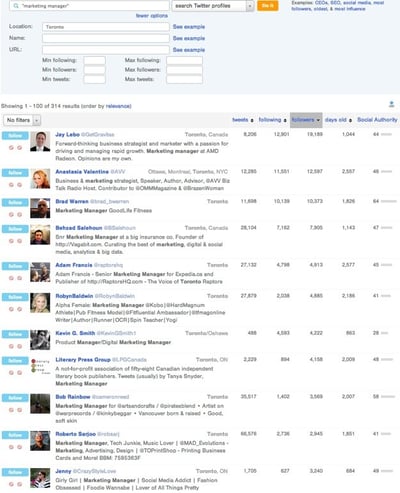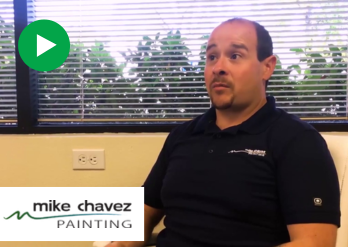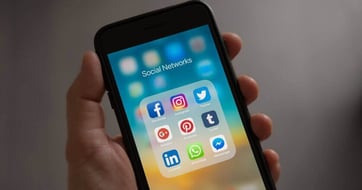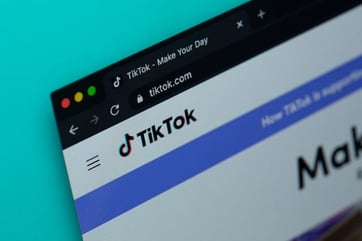How is your current social selling strategy working for you? We believe that showing is better than telling. When we let you in on what we're doing, it's easier for you to connect with and make sense of the content. On top of that, it confirms to you that we practice what we preach, which should be important to you no matter what you're buying. If a company doesn't use its own products and services or practice its teachings, what does that tell you about the company?
Like we did with our AdaptiveSEO™ strategy, we will give you a sneak peek at the components of our social selling strategy. As you follow along with what we do, try to complete the steps for yourself - that way, you'll begin to devise your social selling strategy without even realizing it!
Develop Personas
We've been harping on it all month, but the fact remains that you can't sell anything without a customer. People have different motivations for buying products and services - they need it, they want it, it saves them time, it does something they can't do - so the sooner you understand that not all of your customers are the same, the more successful you'll become. Because at the end of the day, you're not just selling to one kind of customer, you're selling to little groups of people that are tied together by their persona.
So how do you go about creating personas? Consider things like gender, age, the reasons people are interested in you, occupation, income, and anything else you think might help define a group of your customers. For us in digital marketing, it's the occupation (owner vs. employee), company size (revenue), whether or not the interested party is a decision-maker, how much time they have, and campaign budgets. We know that communicating with a small business on the same frequency as a large corporation doesn't make sense, which is exactly why we've created the following personas:
Bob the Business Owner - Bob is the owner of a newly opened recruitment firm. He knows that he needs new leads and is interested in digital marketing because of the relatively low cost-per-lead of some tactics. Bob doesn't have a lot of time to dedicate to marketing because he's busy running the business, and his budget is relatively small. Bob is relatively active on social media since it's a good channel for his industry.
Monica the Marketing Manager - Monica is a marketing manager in a medium-sized company but her core team is pretty small. She often needs to outsource some of the team's digital marketing responsibilities and is very open to collaborating with other groups.
Carl the C-Suite Executive - Carl is one of the key decision-makers for a very large corporation. His company has various marketing needs, but there's also a ton of competition for his business. Carl is the whale that every marketing company desires but he's a tough one to land.
Our personas go a little more in-depth than the above but these three customer types give you a general idea of what we mean. From here, everything else we do will be slightly different, depending on which persona we are targeting. How many different detailed personas can you come up with for your business?
Find Potential Customers
The next step in the social selling process is to find your customers, which can vary based on which persona you're after. As a very general example, Bob the Business owner, is pretty likely to have set up a Facebook page because it's quick and easy (whether he's active is a different story). Carl the Executive is, at the very least, going to have a LinkedIn profile because that's the most popular network among "professionals". Monica the Marketing manager, is probably the most socially active persona across all networks, but we're guessing that Twitter will be where she's most engaged and likely to connect. So, here's one way we set out to find Monica on Twitter:

Followerwonk is a great tool, but Twitter's advanced search works if you need something free. The screenshot shows an extremely simple Twitter bio search conducted in Followerwonk. As you can see, our search was for "marketing managers" in "Toronto," and the results are a goldmine. With just one search, we can now formulate a plan to connect with marketing managers at GoodLife Fitness, Expedia, and a big insurance company, to name a few who are perfect matches for our Monica the Marketing Manager persona.
This exercise can be executed for all major social networks with both free and paid tools. If you aren't doing this, you aren't even trying. Go out and find those customers and start gathering information that's vital to the next step in the process.
Create or Share Helpful Content

Social selling isn't about in-your-face sales pitches, it's about finding a common ground with customers and connecting in a meaningful way, regardless of whether a sale is involved. Often, the best course of action is to let customers initiate things with you after you are able to grab their attention. Hmmm, what's the best way to grab customers' attention these days? You guessed it: by creating the content that answers their questions (which you discovered by listening and observing them).
Before you rush into creating (or curating) content, ensure that you keep your personas in mind and target specific pieces of content to the most relevant groups on the right social channels. Here's what we do on the content front (and how we generally target it):
Webinars: these are free 60-minute broadcasts aimed at educating potential clients and highlighting our value. TARGET PERSONA - Bob the Business Owner, and Monica the Marketing Manager. Executives don't usually have 60 extra minutes to spare nor would they appreciate the level of detail we get down to in our webinars. Bob and Monica (and especially her team) however, could learn a few things from us. Eventually, interest and participation in our webinars could lead to fruitful partnerships down the road.
Marketing Guides: one-page summary usually offering tips and tricks for getting started with a specific digital marketing tactic. TARGET PERSONA - Bob, Monica, and Carl the C-Suite Executive. Because it's so short, we make the argument that each one of our personas could find marketing guides helpful. Bob and Monica probably get the more practical application out of them, but at least Carl can get an idea of what we have to offer in just a few minutes of his time.
Digital Marketing Videos: short videos that give a general overview of how investment in a specific digital marketing tactic can benefit a company. TARGET PERSONA - Carl. That's not to say Monica and Bob can't tune into our Digital Marketing Video Series, but due to its brevity and visual flair, this is our main source of content for executives.
Inside Edge Newsletter: a short newsletter that includes 2-3 mini-articles. TARGET PERSONA - Bob and Monica. Email marketing still works great, but neither of these personas has a ton of email bandwidth to spare. The last thing we want to do is appear spammy, so this once-a-month offering is perfect for a working coffee break.
Whitepapers: an 8-10 page deep dive in a digital tactic of choice. Meant as an educational resource. TARGET PERSONA - Bob and Monica.
Infographics: a visual presentation of a given topic packed with as much information as we can manage. TARGET PERSONA - Bob, Monica, and Carl. Because who doesn't like a great infographic?
This Blog: the blog is for anybody and everybody. Sure, certain posts are targeted more towards a specific persona, but we want as many people to find and read our stuff as possible. Our content is well organized and structured, so people will find their way to whatever interests them!
Be There When Potential Customers Need You
Perhaps one of the most essential elements of social selling is being readily available when a customer has questions or needs more information. After all, with social selling, that's exactly what you're waiting for - the customer to come to YOU! If you put in all the effort to develop personas, find out where potential customers are most active, and create content, then make sure you're responsive when you're needed! Remember, potential customers can get a ton of information without ever talking to you so you absolutely have to make it count when they do come looking for you. If you're not around, they'll move on to the next company. We do this by staying active on all the social sites where our customers might be seeking more information on WSI.
And that's it - there's your snapshot into our social selling strategy. Hopefully, you're off and running with your own strategy but if you have questions, we're always around!







